SUMMER 2020
POUGHKEEPSIE FRIENDS MEETING
Poughkeepsiequakersquakers.wordpress.com
Advice 8: Friends are earnestly advised to refrain from practices that are detrimental to the body or the mind, for example, the use of intoxicants and tobacco, and the misuse of drugs.
Query 12: Do we acknowledge the oneness of humanity and foster a loving spirit toward all people? Do we honor Friends’ traditional testimony that men and women are equal? How do we work to make these ideals a reality?
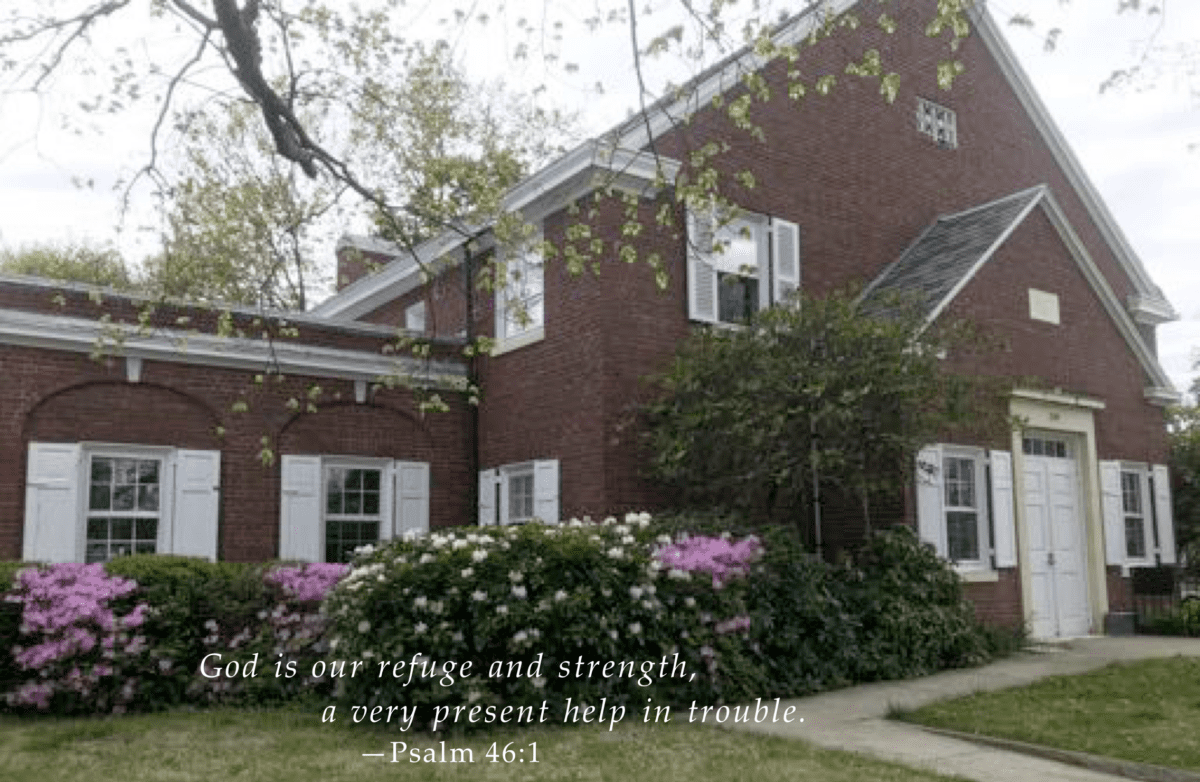
Photo by Lynne James
COMMUNITY was chosen as the theme for the Summer issue of Friendly News back in February when the pandemic was just picking up panic and steam. As the months have gone on, the spirit of community has gained momentum, driving the engines of survival and recovery. For Quakers, community has always been central to faith & practice as an opportunity “to commune with God and one another.” Friendly News is a gathering of Friends in fellowship and communion through the sharing of each other’s testimonies, stories, and reflections. —Friendly News Committee
Rosario: Community—Then & Now
Decades ago there was this commercial on TV promoting Oldsmobile that went:“ It is not your father’s Oldsmobile anymore.” This slogan could also apply to today’s community.
The basic purpose of a community was—when humanity was young and pristine—a system where each member provided mutual help in perfect harmony with the surroundings with minimum waste of resources, time and energy. It could have been designed by a “time and motion expert” or Mother Nature, perhaps.
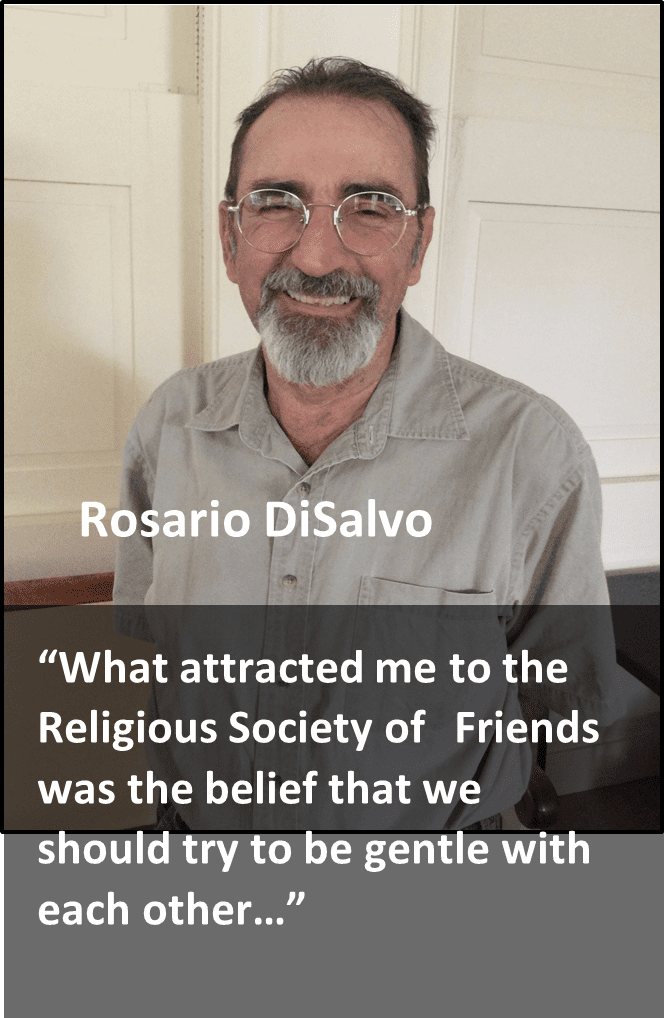
“Greed” was not good then! In fact, everything had to be shared, everybody had to work. There where no lawyers, no one- percenters. The system could be harsh at times, but fair, maybe.
Babysitters were available 24/7. Surplus had not been invented yet, neither was “decluttering.” Professional declutterers and personal assistants will arrive much later.
At some point in our history, an oracle decided that bigger is better. It must have been the same one that invented the concept of “Supersizing,” and “Buy one and get one free.”Most of mankind at the time enjoyed all that surplus, everybody became a little fat and happy, the seeds of the military industrial complex were planted, the new mantra was: Growth! Must produce more! Consume more! Must keep everybody busy and in constant fear of being hit by the enemy.
Well, while the entire Global Community was consuming and producing stuff at great speed, more and more people took notice that the plastic floating on the oceans belonged to all of us and our descendants, and that children and adults work in toxic places extracting rare metal so that we can have our cell phones.
We have always been one global community, just as there has always been one divine source of Energy. Now we have begun to grasp the consequences of unbridled economic growth that is actually making all of us a little poorer and sicker.
Fast forward to today.
The schools have undergone extraordinary changes. Teachers and students have been in virtual classrooms for several weeks now. I found remarkable how my grandchildren have adjusted and actually enjoyed being home with their parents and siblings. But I could not help thinking about how poor households struggle economically and, at the same time, tutor the children.
I noted few bright spots in this great global tragedy. First responders are recognized as heroes, workers who are invisible in “normal” time became more present to the people they serve. I saw homemade signs on the sidewalks thanking first responders, or offering free coffee at some gasoline stations. I noticed people being a little more somber but also a little nicer.
I wonder what our communities will be like two years from now after so many changes. Some might be better after new and more efficient ways to do business have been implemented, but also too many people have lost too much. It is up to all of us to look at each other with compassion and generosity.
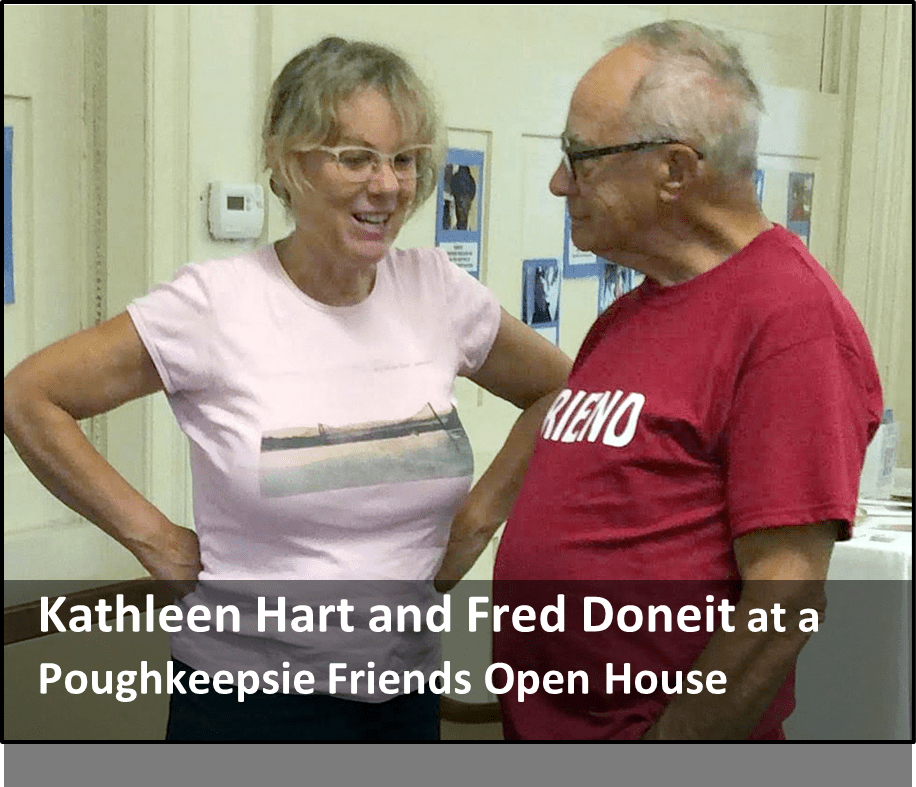
Kathleen: On Breathing
Simplicity, Peace, Integrity, Community, Equality, and Stewardship — these work in concert. One is not more important than another. These days, however, I reach for the first three words because it is hard to breathe easy.
The pain of injustice is urging us on. The pain of knowing others cannot even count on the most basic of life’s necessities, which is the chance to breathe. We saw a person try to use her privilege to deny that right to someone who challenged what she saw as her supreme authority over him. We saw her so determined to do so that she nearly choked her dog. We heard the pleas of a man – once again — go unheeded as a thug in uniform deprived him of his life’s breath. James Baldwin explains why he had to leave America: “I needed to be in a place where I could breathe and not feel someone’s hand at my throat.”
Hundreds of thousands of people die gasping for air, a disproportionate number of them poor minorities, because our leaders chose to invest in guns and big corporations instead of education and healthcare. We see poor people forced to put their lives at risk just so that others can eat meat. Work has become more dangerous for health care workers and members of the police force who do care about equality and want to serve all people.
I feel an urgency that says: “Do something: anything.” But we need to do the right things. For that, we must take a breath. What happens in those places where protestors and police officers kneel, march, pray together? They have found a moment to breathe. “There is one way of breathing that is shameful and constricted. Then there’s another way; a breath of love that takes you all the way to infinity.” – Rumi
What I miss most about meeting in person is the sound of others breathing. My eyes are often closed as I hear Friends around me breathing. Sometimes it reminds me to draw a deeper breath. Or it reminds me I am not alone. Even the labored breathing of our cherished late Friend Dick Hathaway was a calming reminder of the comfort we take in worship at any age, in any condition.
In his novel about a plague, Camus describes a doctor named Rieux, and a tourist named Tarrou doing their best to save people. But one night they go swimming in the sea. The doctor dives in first, lies on his back and gazes at the starlit sky: “He drew a deep breath.” Then Tarrou dives in and swims alongside him: “he could now hear his breathing.” Afterward, they return to their work: “Yes, the disease had given them a respite, and this was good, but now they must set their shoulders to the wheel again.”
I am grateful to breathe.
Simplicity: life is breath, first. Peace: breathe. Breath and be still to find the still inner voice. Integrity: we seek it in the stillness and quiet of our breathing. It must precede action. Community: we seek one another as we seek our breath. Only then can we take appropriate action to improve community, work for equality and stewardship.
Sue: In a Community of Friends
Years have passed since Sue Jefferson had been a member of the Poughkeepsie Friends Meeting, but distance and time never took her away from the strong connection to community she feels here. In May 2020, Sue was warmly welcomed back after applying for reinstatement as a PFM member. Although she wakes up in Milford, Delaware where she lives with Drew, her husband of 50 years, she can now be at rise of meetings in Poughkeepsie on Zoom.
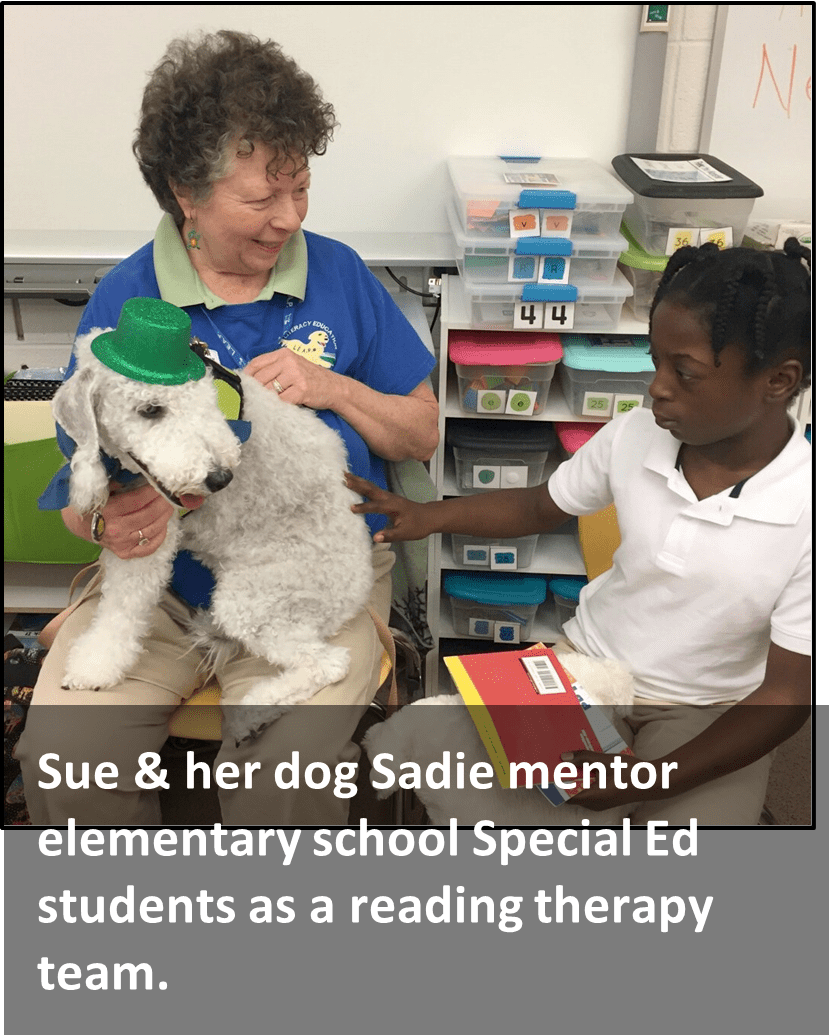
I grew up Methodist in a small, farming town in Southern Delaware and got interested in Quakerism in college in the late ‘60’s when I became friends with a Quaker conscientious objector draft counselor. Her office was at the Wesley Foundation, a Methodist college group, where I was very involved. Looking back on my life, I realize that I have always been a pacifist.
Mine was a happy childhood. My parents were both teachers in Selbyville, Delaware where my father taught agriculture and science. He would often take my older sister, Barbara, and me with him when he went to visit his students’ farms. He was always teaching us about animals and the natural world. My best friend was our wonderful mama cat who had lots of kittens. When she died, I was devastated. I remember taking a walk in the woods and, even though I had heard about God all my life, in the woods I felt God’s presence for the first time in a way I never had. It was a life changer.
In Junior High, I moved with our family to Wilmington, Delaware and I went on to major in sociology and secondary education at the University of Delaware where I met my future husband, Drew, at a church conference. It was another life changer! I got involved in the Peace Movement. Even being the non-violent goodie-two-shoes as I was, I found out I had an FBI file! (That was the late 1960’s for you.)
Drew and I got married after graduation from college. He began a long career with IBM and I taught social studies. I started attending the Alapocos Friends Meeting in Wilmington. Drew was never drawn to the quietness of the Quaker Meeting, preferring a more traditional Protestant service.
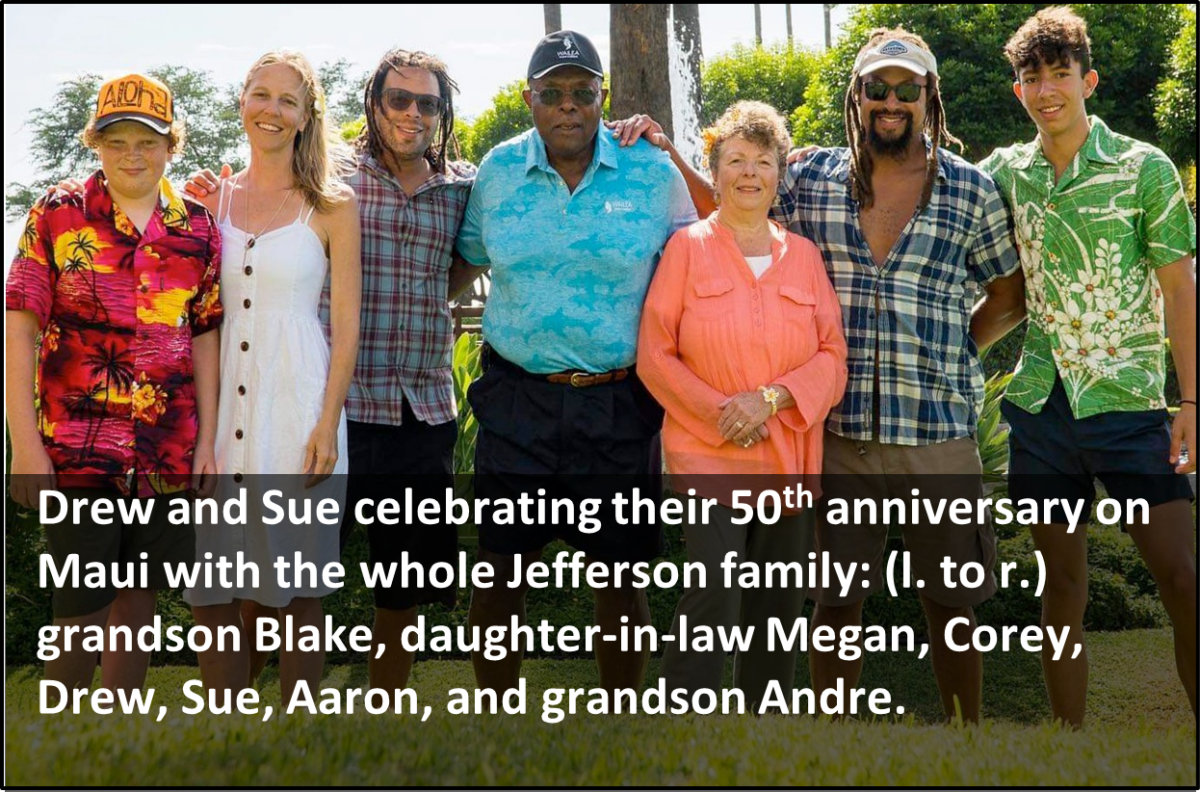
I stopped teaching to have a family and our sons were born, first Aaron, then Corey. We moved to Poughkeepsie where I became a Member of the Poughkeepsie Meeting and the boys went to First Day School where I sometimes taught. When we moved to Maryland, I attended Sandy Springs Friends Meeting along with Aaron and Corey, but I remained a member of Poughkeepsie Meeting.
For our next move, we went to live in the Cleveland area. Because I could not find a close enough meeting, Drew, our sons, and I attended a Protestant Church together. When Drew retired from IBM, we moved to Williamsburg, Virginia. Although I had hoped I could retain my affiliation to a wider Quaker fellowship, that was not possible. I decided to withdraw my membership and continued going with Drew to our local church. I’ve always felt like a Quaker, whether I was a member or not.
Our most recent move has been to Milford, Delaware where Drew and I attend a little Presbyterian Church. I volunteer at the church’s Monday Night Soup Kitchen. When asked if I’d like to become a member of that church, I said no. The invitation helped me realized how much I missed my relationship to the Quaker community in Poughkeepsie. I called Jean and Fred Doneit, my long- time and close friends, and started the process of reaffiliation.
I am glad to be a member of the Poughkeepsie Meeting again and back in a community of Friends. I look forward to getting to know everyone and thankful for Zoom meetings so we can.
Fred: A Caring Community
On May 2, I participated in an on-line Zoom workshop, sponsored by Powell House, and led by Lloyd Lee Wilson, a well-known Conservative Friend from North Carolina. The workshop was entitled “ Listening With Tongues.” I think Lloyd

Lee interpreted this to mean: “God gave each person the ability to hear the speaker’s truth, beyond the words being said.”
Wilson was calling for a caring community, in which each knows where each other is coming from, and can listen with empathy and without judgment. He recounted Woolman’s visit to the Indians, where he experienced their worship by hearing “where their words came from.”
Lloyd Lee shared several characteristics of modern Quakerism. One was our desire to be inclusive, without expectation of any (Christian) theological belief, other than acknowledgement that Quaker origins were rooted in primitive Christianity, and that the seeker was open to embarking on a spiritual journey in which he/she could grow over an entire lifetime.
I asked if we could welcome a seeker who declared their self to be atheistic, and the resolution I heard was that we could welcome anyone who was open to being changed, not through indoctrination, but by direct experience of the Divine in worship.
“History is what Quakers have instead of theology, ” Wilson explained. That is, we need to learn from the experience that early Friends had in worship. I asked what the role of Meeting elders should be to perpetuate early Quaker experience, and good order. Lloyd Lee suggested that I take this question as an exercise in personal discernment.
He felt that we have reduced our language to terms that do not offend anyone, and which strike seekers as notably secular. At the same time, we have become weak in our use of Quaker practices, and Gospel Order. We attempt to build community by diluting our discourse to the least common denominator, and to revert to conventional business procedure in our meetings for church affairs.
He emphasized “change” as the most important dynamic in the Quaker way of life. He decried the terms “birthright” and “convinced” Friends because they implied a status of attainment, whereas the true goal of a Quaker life is transformation and constant growth toward the Kingdom.
“God’s project is to create right relationship between all beings in God’s Creation,” Wilson went on. “The Meeting is our living laboratory — the place where we can change and share our journeys in safe and non-judgmental relationships. Continuing revelation means that we must change constantly. Early Friends went to Meeting expecting to be changed.”
In pursuit of coming closer to God, he explained, “we are not called to be successful, but to be faithful to God in the quest…We can only build on what we are for, not on what we are against.”
The two hours passed quickly, with so much food for thought —this summary cannot capture the wealth shared. Lloyd Lee concluded the session with a poem by the Sufi master Hafiz:
“How do I listen to others?
—As if everyone were my Master, Speaking to me His cherished last words.”
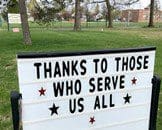
Photo by Lynne James
BELONGING TO THE GREEN HAVEN WORSHIP COMMUNITY by Dianne-Ellen McCarron
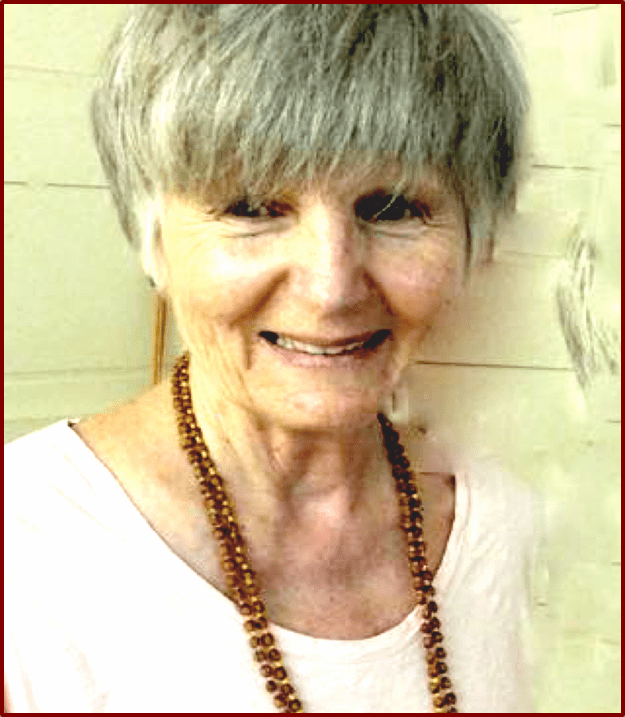
As I turn right off the end of Green Haven Road onto another country road in Stormville, my eyes catch the sight of a long grey cement building set on top of a long wide hillside. The building has no windows except in the entrance area. For over twelve years, I have been making this trip from Poughkeepsie on monthly Friday evenings.
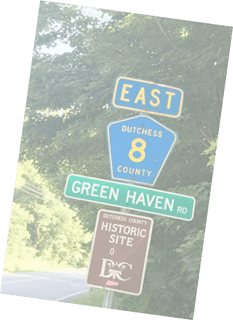
Each time, the initial sighting of this stark towered building feels haunting and despairing. Once I park my car in the visitor’s lot, I climb the stairs to the gymnasium-sized waiting area. I make a point to glance through the windows over the front entrance which during the winter months when sunset is early, offers visitors a spectacular sunset splash of colors as the sun slips behind distant mountains. Sadly, I realize that the incarcerated men inside will not ever get to see this beauty unless they happen to be one of the few who qualify for a job as an “inside” sanitation worker.
This room is where the first check-in is located. The volunteers go in as a Poughkeepsie Friends Meeting and Bullshead Meeting team, often in pairs and sometimes individually. The way is the same each time. We stack jackets, shoes, watches, keys, any books and related program materials on the counter which are searched by a correction officer. Then we walk through the seven-foot-tall “buzz-machine” and we are wand-ed to check further for contraband. If all is well, we proceed through a small outside courtyard into the main building inside. Here, we sign in and wait for a correction officer to pick us up and escort us to the Meeting Room. When the officer shows up, we start our long walk which includes passing through barred doors opened and then clanked locked behind us every time we get to an intersection of halls- and there are many. A correctional officer guards from each of the five or six stations along the way, letting us pass as we flash our prison identification card. He watches us as we proceed still escorted by the same correction officer who met us at the beginning of our entry in.
The corridors are long and the energy is stagnant and restless at the same time. The temperatures inside often are the same outside- sometimes freezing and at other times sweltering, depending on the season. The lack of fresh air, the noisiness and harshness, the sparsity of true rehabilitation or the exercise of personal rights, being identified as numbers rather than as persons seen for who they are becoming, are all ongoing ingredients that are part of this despairing prison environment. And yet, I notice that the despair I feel on the way “in” due to this mix, starts lifting as we approach our last corridor and finally arrive at our sign-in station near our Green Haven Meeting Room. From here, I know that the energy in our meeting room will be different.
We walk through the door into the Meeting Room. The men have arrived there before us as they usually do, and with smiling faces, greet us. We are welcomed into their circle of chairs which they have arranged with care. In the summer, the men put the fan on ahead of time to air out and cool the room as best as they can. In the corner against a wall, the pot for boiling water is already perking so it will be ready for our short break half way through our time together. Once in our
circle, the GH Clerk starts the meeting officially. We each have a turn telling about our week and how we are faring. Sometimes, prayer requests are made for one another and for our families. But always there is a realness about our sharing now and later that is honest, open, and trusting. I often sense God’s hand in this Circle of Trust which is such a contrast to the general prison environment. I am inspired to be present in the same way.
After, sharing our week, one of the men reads a passage from Faith and Practice to bring us into silent worship for about 30 minutes. This silence is cherished by the men who have very little silence anywhere else in the prison. It is a blessing to be able to share this gratitude with them.
Our agenda for the rest of the evening is parallel with the Poughkeepsie Friends Meeting order on a Sunday. The men long for this and want to extend the Meeting outward to the world on Friday evenings, especially to Poughkeepsie Friends. We all sense this union and feel the greater community connection alive in our worship. Although ours is a small group of around 10 people, this sense of a greater belonging to one another and to God is heartfully experienced.
When silent worship is over, we have after-thoughts and then proceed to announcements. Hospitality reigns again during our short break when the men often serve us tea, instant coffee, and at times, a snack which one of the men have purchased with their own money from the commissary. When it is my turn to be at Green Haven, I share a program of some sort relating to Quakerism and growth in ourselves and with God. (Many other volunteers also bring a topic to share on another Friday night). I am touched by the men’s desire to openly share their hearts and souls. I think the depth of sharing with one another deepens our community trust and also helps us see in possible new ways. After our Friendly Discussion for the evening, we stand in a circle holding hands and one of the men speaks out a closing prayer before we break the meeting and say our good-byes. As I leave on a Friday evening, the “Spirit with and in us” comes home with me.
Green Haven Worship Meeting is a community that cares for one another: we care about one another’s illnesses, parole hearings, personal challenges, families, law suits and infractions that have occurred, how the Spirit is in each other and in our community and in many other ways.
Sometimes, there may be differences. Sometimes hurts happen. But, the willingness to commit to the Quaker process unveils a desire to come together even when conflicts inevitably arise. By exercising faith and practice, there’s an invisible and visible weave of transformative active love holding us. We still may have trials along the way, but when we witness our attitudes altering, we may sense the holiness rising from the depths. I feel blessed being part of GH worship community with all the men now and those men no longer at Green Haven. I feel grateful for all the dedicated volunteers now and through the past years whose voices and abiding presence is part of a powerful ongoing dynamism.

COMMUNITY THROUGH CORRESPONDENCE:The Inside Outside Letter Writing Collective
By Judy Meikle, Wilton Quaker Meeting
When you think of the Yearly Meeting, who is in our community? Young adult Friends, children, elders, Friends of color, white Friends, LGBTQ Friends? How do these identities intersect? Who is centered and who is marginalized? And who in our community is not named here?
A significant group in our community is incarcerated Friends – the more than150 people who currently attend Quaker worship groups in prison or who have attended at some time in the past and been moved to a facility where Quaker worship is not available These inside Friends in the best of times can feel invisible to the wider Yearly Meeting. Now, with Quaker worship suspended due to COVID-19, they are further isolated from their Quaker community and in need of our intentional outreach.
The Inside Outside Letter Writing Collective is a program of the NYYM prisons committee with a mission to connect incarcerated people within NYYM with Friends on the outside. We are a collective sharing our truth through mutual ministry. We believe in the power of relationships to connect us human to human.
In May, I received a letter from a Friend who had read about the collective in SPARK: “My name is Joseph S., but everyone calls me Jazzy. I was first introduced to the Religious Society of Friends while I was in Sing Sing prison in 2015. My last three prisons didn’t have a Quaker Meeting and I only get my ‘Quaker-Fix’ via my Friends Journal and SPARK, but I assure you that it is not the same as Fellowship, which I am desperately missing. I would love to be able to correspond with a Friend, because quite frankly it is terrible not to be able to connect with like-minded people during this trying time of mine. I would love to be added to the list of Friends behind the wall to be linked with a Friend who can keep my spirits lifted, and I can do the same for
them.” Jazzy is now writing to an outside Friend, his namesake Joseph!
We keep it real in the collective, writing letters that are grounded in spirit. We reach out to each other to lovingly share our wisdom and spiritual journeys. That this process is a source of joy was communicated to me recently by this Friend, Deborah: “I just brought in yesterday’s mail from the barn, where it sits in quarantine overnight and there in the middle of the pile was a letter – it was thick and I just knew what it was! I put some good music on the stereo, poured myself a cup of decaf coffee and sat down in my favorite chair in the kitchen. My Inside Outside correspondence has now formally begun!”
We have been building our letter writing community since January and to date there are upwards of 90 participants. We continue to invite others to join. You must be over 18 and not currently registered as a volunteer with the NYS Department of Corrections and Community Services (DOCCS). People who sign up receive our ‘Guidelines for Friendly Letter Writing’ before they are matched up in correspondent pairs. A PO Box and forwarding service is available and information about an email option with JPay services will be provided.
Outside Friends, to sign up please contact us by emailing [email protected]. We will send you the link to a Google Form and information about next steps.Friends who are already engaged in building community with incarcerated Friends through correspondence are very welcome to join our list serve. We provide ongoing peer support and your presence in the program would be invaluable. Email us at [email protected].
Inside Friends, please sign up by writing to Judy Meikle, Inside Outside Cooordinator PO Box 765, Norwalk CT 06852
FRIENDS
Marcia Dunn
Interview by Dare Thompson
What a pleasure it’s been for me to interview Marcia Dunn and her daughter, Robin, who have had ties with Quakerism and PFM over many years but have just recently become a presence again in our community. While this was intended to be primarily about Marcia, that story is enriched so much by Robin’s insights, I have woven a bit of Robin’s story in here too. I thank them both.

Robin’s sons, Divynne (far left) and Michael, pictured here a few years ago with Marcia and Robin. They are now 30 and 17 years old respectively.
How important our parents are to what we become varies a lot. In Marcia’s case, both parents were extremely influential and that influence continues into the future. When she was born in 1936 in NYC, these parents, both doctors, were living on Central Park South in Manhattan and both had professional offices in their apartment – a quite unusual thing. Marcia remembers learning that her mother was from St. Louis and says that her father was from “somewhere in Upstate New York” (Robin thinks maybe Troy) and that they met at a Communist Party meeting. Since Marcia’s mother was an osteopath, and Marcia had issues with her back even as a child, her mother was also Marcia’s doctor. Her father was a psychotherapist, with “a special gift for dealing with troubled boys.”
Her father joined the Army shortly after Pearl Harbor and after that the family did a lot moving around – to Kentucky, Texas, Florida, New Jersey, Kansas, and for a somewhat more permanent stay – to Wayne, Pennsylvania. When asked how all this moving around in her early years had affected her, Marcia said she always felt like an outcast – the wrong kid in the wrong setting. Her father was Jewish which also made her feel “different.”
Marcia’s mother was politically active – even where her activities were not acceptable, as in Southern states – and she was drawn to Quaker values. So from 7th grade on Marcia was able to be involved with Radnor Monthly Meeting, which was a big influence on her. (Robin reports that Grandma Mildred Dunn is buried there under a mulberry bush.) Marcia ended up spending every weekend working in Philadelphia in Quaker high school workcamps and summers on a Native American reservation on an island in Maine. She was further exposed to Quakerism at Swarthmore College (class of ’58) where she became a political science major. She went on to graduate study at the East Asian Institute in the Department of Public Law and Government at Columbia University.
By then the family had moved to California where her father was working with the Devereux schools. A drive home from NYC to California with another political science student from California led ultimately to her first marriage. While the marriage lasted only about three years, a happy outcome was that Marcia’s sister married her husband’s brother, and that marriage was a long-lasting one.
After her divorce, Marcia returned to Columbia to continue work on a Ph.D. She also worked at Youth House in the Bronx, a house of detention for boys in NYC. It was there that she met Cecil
Seale, a man who – like her father – was “gifted with bad boys.” She had a cubicle near his at the school, and being both young and new to the job, she was drawn to the wise and loving man she could hear talking with clients. She sought his guidance, which was not only very valuable to her in her own work with clients but became much more. “He knew everyone,” she said, “and he knew all their names. Everyone loved him.” She further shared that he had come to the U.S. from Barbados as an adult, worked his way through college and graduate school, had been married, and had a son, Michael.
In 1965, when Marcia would have been 29 and Cecil in his early 50s, they were married. In 1967 Tanya was born, and in 1970 Robin came along. Marcia’s Ph.D was put on permanent hold. In 1973 when the girls were 6 and 3, Cecil took a job at the Greer School in Millbrook and the four of them moved into a home on campus. A year or two later they bought a home at 198 Rochdale Road, off Route 44 near the Poughkeepsie Adams store, and this was home throughout the girls’ growing- up years. In the mid-nineties Marcia moved to an apartment in Wappingers Falls and only recently moved to Robin’s home off of Route 115 here in Poughkeepsie and became a regular attendee again at PFM. “It feels like coming home,” says Marcia about being back in our Meeting.
Robin says that she was a “daddy’s girl” in spite of their 51-year age gap. She was only three months older than Cecil’s oldest grandchild with whom she was “very, very close” and “got away with a lot!” Their happy memories include visits every summer to Barbados to see family.
Tanya, who had very serious dyslexia plus various medical issues, depended very much on her mom (just as Marcia had so depended on hers), and the two were very close throughout Tanya’s youth.
Tanya studied psychology and women’s studies and, in spite of her dyslexia, she earned a BA from Clark University and a graduate degree from Northeastern.Unfortunately, as a young woman Tanya became estranged from the family for reasons no one understands. “We had a very happy childhood,” says Robin, “so I cannot believe anything bad happened with us.” Tanya did not even return in 1997 when Cecil died and a memorial was held at PFM.
Robin’s memories of her mom during these years was of a socially-conscious person with very strong political views that she was happy to share with others. Robin remembers a lot of bumper stickers, the Nestle boycott, and more. Meanwhile she was also being influenced by her grandmother’s and mother’s Quaker faith. From age 5 or 6 she attended First Day school at PFM and after attending both “regular” public and private schools locally, she also attended Quaker schools for her high school years – Westtown in Chester County, PA and Oakwood Friends in Poughkeepsie. Both schools trace their roots to the 18th century, and she took Quakerism classes at both. Interestingly, Robin said that it was not until she went to Westtown that she saw herself as a “minority.” Until then, “I was just Robin.” She attributes this to the international feel here, thanks in part to IBM’s influence.
Considering her parents and maternal grandparents, it is no surprise that Robin is now a supervising case manager at Hudson River Housing (HRH)’s River Haven Program, a transitional program for homeless youth. Robin says she has worked at HRH for nineteen years and loves her job. “My father and Cecil would be very pleased and proud to see this,” comments Marcia with her own look of pleasure and pride. It will be interesting to watch and see where their influences and interests take Robin’s sons, Divynne and Michael.
FRIENDS
Lynne James
Interview by Claudia Ansorge
Lynne James at home in her backyard on Parkwood Boulevard, around the corner from the Poughkeepsie Friends Meeting House.

Lynne James has been a member of the Poughkeepsie Friends Meeting since 1978, but she’s been a Quaker all her life—a “birthright Quaker” with a family tree with roots that go back to William Penn and colonial America. Lynne’s Quaker ancestors arrived from Wales and settled in Radnor Township, Pennsylvania in 1682.
But Lynne makes clear that it is not the lineage that is important. That’s just a fact of the matter that might help understanding that a Quaker is who she is. “I am steeped in being a Quaker,” she explains. “Simplicity, equality, social justice, peace, nonviolence and, especially now, earthcare…the essence of Quakerism has spoken to me since I can remember.”
She also recalls something her parents frequently told her: “Let your life speak.”
Born in Philadelphia, Lynne was first a member of Moorestown Friends Meeting in New Jersey. After elementary school, she and her sister, Susan, and their parents moved, transferring their memberships to Radnor Friends Meeting and Pennsylvania Yearly Meeting until Lynne transferred her membership to Poughkeepsie Friends Meeting in 1978. Her mother, Jane, was an English teacher and librarian at Moorestown Friends School and Friends Central School. Lynne’s father, Bill, was a conscientious objector and performed alternative service in the Navy during WW II.
But his first love was working with his hands, rebuilding wooden sailboats. For Lynne, the hours spent working closely with her father are among her fondest memories and their time together, out in nature, on the beaches and waters of the Jersey Shore.
“I went to silent meeting for worship from the time I was born,” she says, remembering the straight wooden bench she sat on and the tree that she would watch move and grow outside a particular window in the Meeting. At the Poughkeepsie Meeting for Worship, Lynne always sits in the same spot— on a straight wooden bench across from the windows where she can see the trees.
“God is Nature, “ she explains. “This is my spirituality. A tree, the song of the bird, the ocean, a small bug—this is who God is to me.”
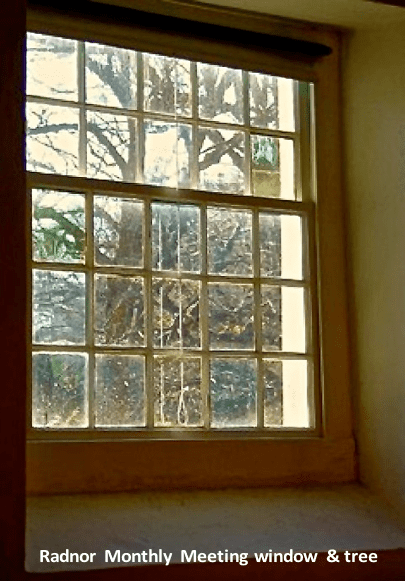 Lynne’s been a vegetarian for much of her life because she couldn’t make herself eat something that was a living being “There’s such a strong sense of connection between me and the bird singing in the tree and the bug that I didn’t kill this morning. We are all one. “ It’s the same sensation that she feels in silent worship. “I don’t know how to name it,” she continues. “Spirituality is too small a word. It’s a mystery. And it’s for always.”
Lynne’s been a vegetarian for much of her life because she couldn’t make herself eat something that was a living being “There’s such a strong sense of connection between me and the bird singing in the tree and the bug that I didn’t kill this morning. We are all one. “ It’s the same sensation that she feels in silent worship. “I don’t know how to name it,” she continues. “Spirituality is too small a word. It’s a mystery. And it’s for always.”
In 1962, when Lynne entered Ithaca Conservatory of Music at 17 as a string major, her dream was to play the viola professionally, but life took a different turn. Lynne lost both parents early in her college career. She met her future husband in her senior year, and had a Quaker wedding at Moorestown Friends Meeting. They had two children, William and Melissa, and moved as a family to Minnesota where her husband continued to work for IBM. They returned to the east coast to live in Wappinger Falls, but the marriage ended.
Her first step out in her life as a single parent was to find a Quaker Meeting and it brought her to the Poughkeepsie Friends Meeting House in 1978. When she asked the Meeting for help finding a place to bring up her children, Peg Keiser from the Meeting walked her around the corner to a house on Parkwood Boulevard that might be for sale. It had one bush in the back yard when Lynne bought it on the spot. She went on to plant a life there, raising her children and bonding with the earth. Poughkeepsie Friends, New York Yearly Meeting Summer Sessions at Silver Bay, and Powell House weekends were all a strong Quaker presence in her children’s formative years living in the house Lynne’s grandchildren now know.
Spirituality and environmental activism blended in many years of volunteering in Pete Seeger’s Clearwater Hudson River revival movement. She has stood in peaceful, silent demonstrations with Women in Black and marched for climate change including the 2014 People’s Climate March (PCM) in New York City that saw more than 300,000 participants advocating for global action against climate change.
Her childhood love of working with her hands next to her father and playing with clay on a potter’s wheel at art camp led her to a ceramics career and starting Riverstone Pottery. Her work is inspired by “the smoothly textured surface of a rock, a seed pod, a shell, a walk in the woods.”
And her backyard with the one bush has bloomed under her loving care into a sanctuary for all creatures and plants, big and small, who come there. Lynne has built the outdoor deck and arbor, and planted the gardens and welcomes every butterfly, bird and bug that visits.
She went back to school at Orange County Community College to get a degree in occupational therapy. Since then she worked with special needs and multiply- handicapped students. Her teaching went on after her retirement as a substitute at the Wimpfheimer Preschool at Vassar College.
In 2017, Lynne was diagnosed with breast cancer. She remains extremely grateful for all the love and caring and support she received from Poughkeepsie Friends. Although she never did go on to play viola in an orchestra, music is the sound track of her life and can always be heard at the close of her day.
Lynne wrote to her kids and told them if they wanted a memorial service for her when the time came, she didn’t want anything fancy, but she did want them to play only one song—Pete Seeger’s To My Old Brown Earth that, for Lynne, says all that needs to be said.
To my old brown earth And to my old blue sky
I’ll now give these last few molecules of “I.”
And you who sing, And you who stand nearby, I do charge you not to cry.
Guard well our human chain Watch well you keep it strong As long as sun will shine.
And this our home
Keep pure and sweet and green, For now I’m yours
And you are also mine.
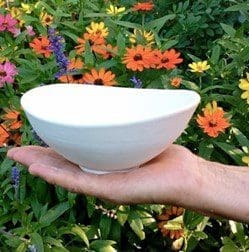
Riverstone Pottery
“…Unlike the American Revolution, which began with the shot heard round the world,’ the rebellion at Seneca Falls – steeped in moral conviction and rooted in the abolitionist movement – dropped like a stone in the middle of a placid lake, causing ripples of change.
No governments were overthrown, no lives were lost in bloody battles, no single enemy was identified and vanquished.
The disputed territory was the human heart and the contest played itself out in
every American institution: our homes, churches, schools, and ultimately in the provinces of power…”
From a foreward by Geraladine Ferraro in The History of the American Suffragist by Doris Weatherford
“I AM A QUAKER.”
The Women’s Suffrage Movement: & My Education in Quaker History
By Dare Thompson
I have heard often about the importance of the women’s rights convention of 1848 in Seneca Falls, so beautifully articulated above by the first woman to run for vice president of our country. But it was not until I went there in August 2016 as a member of the newly formed New York Women’s Suffrage Commission that I discovered that the people who dropped that “stone” were almost all Quakers!
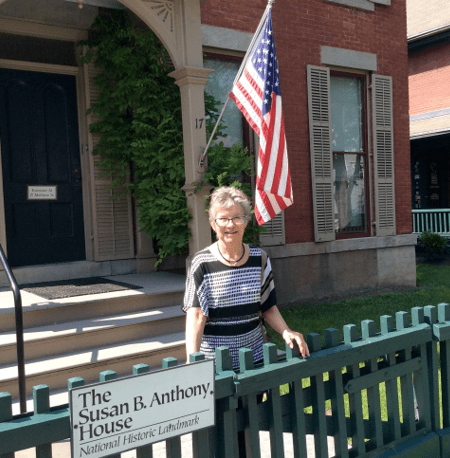
Dare at Susan B. Anthony’s home.

Susan B. Anthony’s gavel
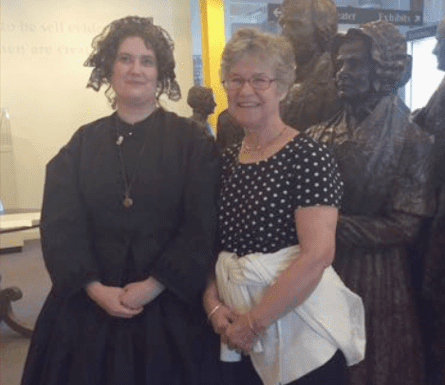
Elizabeth Cady Stanton(aka Melinda Grube )
and Dare Thompson
Our group met at the M’Clintock House, part of the Women’s Rights National Historical Park in the town of Waterloo, just west of Seneca Falls. The sign out front had told me that the M’Clintocks (Thomas, a pharmacist, and Mary Ann) were Quakers, so I felt especially connected as I climbed the narrow steps to the top floor. There are only about a dozen of us on the official commission but we nevertheless filled the room. New York’s Lt. Governor, Kathy Hochul, would quickly be elected chair of the commission, but first we all introduced ourselves
As president of the League of Women Voters (LWV) of NYS, I’m sure I mentioned that my organization was “the living legacy of the suffrage movement” since the LWV was formed directly out of the American Woman Suffrage Association, led for many years by Susan B. Anthony (famously a Quaker). But I was starting to grasp how little I really knew about suffrage history – such as the fact that the room we were in was where Elizabeth Cady Stanton, Lucretia Mott, Mary Ann M’Clintock and many Quaker friends of theirs actually created the Declaration of Sentiments that was to be the founding document of the American women’s suffrage movement.
After discussing plans to celebrate New York women getting the vote in 1917 and all U.S. women getting the vote in 1920, many of us headed to the museum in Seneca Falls. A tour was going on, led by a woman in full mid-19th century costume who was speaking as Elizabeth Cady Stanton. She was standing next to a crowd of statues (slightly smaller than normal size but still plenty big and quite overwhelming in their number), and she started explaining who several of them were. It became Quaker this and Quaker that as she spoke … BOOM! I realized how ignorant I was about the history of my own religion! I went to First Day School at Cleveland (Ohio) Meeting, graduated from a college (Swarthmore) founded by Lucretia Mott, my sisters went to the even older Quaker boarding school (Westtown). So how did I not know these things? What must other people not know?
As she started to lead us next door to the Wesleyan Chapel where the historic women’s rights convention of 1848 was held, I worked my way up to “Elizabeth,” careful not to step on her dress, and said I had some questions about the Quakers’ role. In a Melinda Grube voice – that is, momentarily and clearly herself, not Elizabeth– she said, sotto voce, “I AM a Quaker” which I took to mean, “find me later!”
Though delighted by this discovery, I had to join a tour by a board member of the National Women’s Hall of Fame which was located in a storefront down the block, but Elizabeth/Melinda was at the information desk when I returned. “I hoped you’d come back, “she said, and thus began a conversation not just about the role of Quakers but also about the racism that Elizabeth, in particular, is accused of and the ways the museum is dealing with it.
In this conversation and others that followed, I became increasingly impressed not only with Melinda’s grasp of history but with her ability to “become” Elizabeth, a woman about whom she once told me, “I would have had trouble being in the same room with her!” Elizabeth was never officially a Quaker, although she often told people she was, but Melinda IS a Quaker and her family attended Poplar Ridge Friends Meeting until they moved to Orleans County, northeast of Buffalo.
Feeling strongly that more Quakers should know about the Quaker contribution to women’s suffrage, particularly as we were about to celebrate the centennial of our winning the vote, I persuaded Melinda to come to Cornwall for a Nine Partners Quarterly Meeting, along with Renee- Noelle Felice, who is the re-enactor for Lucretia Mott at Seneca Falls and a now-and-again Quaker.
They worshipped with us and then conversed as the spirited Elizabeth (1815-1902) and the more prudent but equally brave Lucretia (1793-1880), telling us how they met in 1840 at the World Anti-Slavery Convention. Though official delegates, they were not allowed on the floor with the men because they were women, and their outrage was still smoldering when they met again in Seneca Falls in 1848. Elizabeth’s fire and radical thinking and Lucretia’s fine reputation even beyond Quaker circles seemed to be just what was needed to launch a movement. Toss in a tight network of Quakers who could get the word out, a remarkable turn-out including the powerful presence of thirty-year-old Frederick Douglass, and the world was not to be the same.
Where, you might ask, was Susan B. Anthony in all this? Elizabeth and “Aunt Susan,” as she became known in the Stanton household, the “pen” (Elizabeth) and the “feet” (Susan) of the women’s movement, were not to meet until 1851 in a moment commemorated in a sculpture there in Seneca Falls. (It’s across from Café 19 in Generations Bank. Don’t miss its modern portraits of our foremothers!)
On my trips to Seneca Falls and to women’s history conferences, I have also been privileged to get to know Judith (Judy) Wellman, a Quaker from Fulton, NY, and a professor emerita at SUNY Oswego. Judy is a former historian at the Women’s Rights National Historical Park and her book, The Road to Seneca Falls, is a must-read for anyone studying the 1848 Convention.
So starting at pathetic, I have moved to the “somewhat informed” level of understanding of Quaker history in New York. That history is rich and complex, and like all history, constantly unfolding since the more I know, the more questions I have. But let me briefly share some local connections to that history.
Beyond discovering personal connections including my beloved maternal grandmother’s great grandparents buried in a Waterloo cemetery, I found important Nine Partners/Oakwood connections. Few people know that Susan B. Anthony’s father, Daniel, went to Nine Partners school and that one of Susan B’s early homes was in the Albany area. More (and so) significantly, Lucretia Coffin and James Mott met when James was a teacher at that school and Lucretia came as a student from Nantucket. She eventually taught there too and was disillusioned to learn that, even accounting for seniority, men got paid more than women. While Lucretia is the star player at the 1848 convention, James Mott officially opened the meeting because (or so I heard) the women were overwhelmed by how many people had showed up. He soon backed away and let the women run the convention as originally intended.
The biggest question that hangs over the history of women’s suffrage for Quakers and also for the LWV is racism, and books will continue to be written on this topic. Elizabeth Cady Stanton is especially being blamed for inexcusably racist statements made when black men won the vote before women. These created a rift between her and long-time friend and abolitionist colleague, Frederick Douglass. But even abolitionists weren’t necessarily free of racist beliefs and it is an area of study that is particularly interesting today as we all examine hidden pockets of belief that are inconsistent with our higher values. This alone makes the story of women suffrage worth a much longer article. But on that, for now, you’ll have to wait.
LOOKING AHEAD
DAY ONE
Beginning in September, DAY ONE will be renting space in the upstairs rooms at the Meeting House. The program will train and place early childhood teachers in Poughkeepsie and Dutchess County, and provide 300 children an affordable early childhood education that helps them enter kindergarten, ready to continue learning. DAY ONE helps parents enter or re-enter the workforce, confident their children are thriving. Frank deLeeuw’s daughter-in-law Julie Riess is the organizer and founder of the local group They
will be using the Meeting House for initial training until they find a permanent location. Their goal is to place 200 DAY ONE teachers in Poughkeepsie and Dutchess County over the next five years. dayoneearlylearning.org/
SOCIAL JUSTICE AND ENVIRONMENTAL AWARENESS ACTION GROUPS:
- ENJAN (The End the New Jim Crow Action Network — pronounced “engine”)
A group working locally in the Hudson Valley to fight the racist criminal justice system and end mass incarceration in this country.
Meetings: every 2nd and 4th Wed., 6:30 pm Sadie Peterson Delaney African Roots Library, 29N Hamilton St., Poughkeepsie, NY • 845-475-8781 • [email protected]
- DCPPA —Dutchess County Progressive Action Alliance
The purpose of this organization is to inspire and mobilize sustained political activism through the involvement of the people of Dutchess County, New York, in order to promote progressive agendas at all levels of government. Membership is currently free and open to the public. Email [email protected] to receive weekly emails about activities and upcoming events.
- Race Unity Circle
Started by members of the Baha’i Faith in response to the news coming out of Ferguson, Missouri, the Circle quickly became multi-cultural and multi-faith. The group meets once a month to study, in depth, the vexing and persistent racial divisions that plague the Poughkeepsie community, to nurture and grow interracial bonds of friendship and cooperation, and to groom speakers and facilitators to offer an authentic discussion about racism, “implicit bias” and racial healing in our neighborhoods, schools, places of worship and workplace. Visit Facebook page or join the group through Meetup.
- Nobody Leaves Mid-Hudson:
A multiracial, intergenerational, grassroots organization …”building power for a Hudson Valley, New York State, and country that works for all of us” by organizing people around issue-based and electoral campaigns. Initially formed to fight foreclosures and evictions resulting from the 2008 financial crisis.
Dutchess County Office: 29 N. Hamilton Street, Poughkeepsie NY 12601 * 845 481-0703 •
nobodyleavesmidhudson.org

